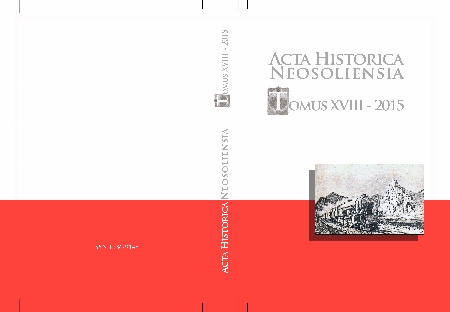Rusíni a problém vymedzenia ich územia v druhej polovici 19. a na začiatku 20. storočia
Ruthenians and the Issue of the Demarcation of Their Territory in the Second Half of the 19th and in the Early 20th Centuries
Author(s): Peter ŠvorcSubject(s): 19th Century, Pre-WW I & WW I (1900 -1919), Period(s) of Nation Building
Published by: Filozofická fakulta Univerzity Mateja Bela
Summary/Abstract: In the second half of the 19th and in the early 20th centuries the Hungarian Ruthenians belonged to the least developed European nations in terms of national, cultural as well as economic life. They considered confessional identity more important than ethnic identity. The Ruthenians claimed allegiance to the Greek Catholic religion. However, they had three different answers to the question of what nationality they belonged to: Ruthenian – as the indigenous population of north-eastern Hungary, Ukrainian and Russian. This ethnic di-lemma also complicated the issue of the determination of their territory, especially in relation to the Slovak population. In the 19th and early 20th centuries the ethnicity as well as the set-tlement of the Ruthenian population attracted the attention of the scholars of other nationali-ties rather than Ruthenians themselves. Their findings were often inconsistent, especially as far as the determination of their western ethnic boundary was concerned. The scholars were confused by the Greek Catholic faith of the population as well as the ambiguous census results. These were factors that complicated the demarcation of the provincial boundary in the new state of Czechoslovakia between the Subcarpathian Ruthenia and Slovakia after the collapse of Austria-Hungary and Subcarpathian Ruthenia’s joining of the newly established Czechoslovak Republic.
Journal: Acta historica Neosoliensia
- Issue Year: 18/2015
- Issue No: 1
- Page Range: 180-198
- Page Count: 19
- Language: Slovak

